Motorola Droid X: Thoroughly Reviewed
by Brian Klug on July 20, 2010 4:27 PM EST- Posted in
- Smartphones
- Motorola Droid X
- OMAP
- Mobile
Software - Android 2.1
I want some froyo already.
The X launched with Android 2.1, although Motorola emphatically promises that they will update the X to 2.2 “late summer.” That update will bring all the Froyo goodness I’ve been enjoying on my Nexus One since the update, including flash, tweaks to the UI, much improved responsiveness, and “update all” in the market among a host of others.
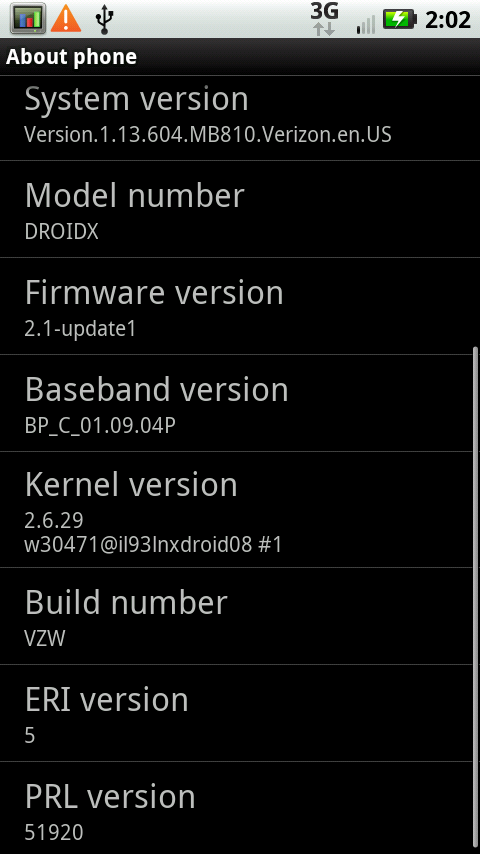
Droid X Software - after OTA Update
To be honest, using 2.1 on the X makes it just feel old after using my Nexus One with 2.2 solidly for a few weeks. I can understand Motorola wanting to launch the X as soon as possible, but launching mid summer and promising a platform-changing and relatively major update by late summer is a bit puzzling.
Motorola Droid reviews written running 2.0 at launch read totally different than reviews from the device running 2.1. So too will the X will be changed from 2.1 to 2.2. Hopefully we’ll still have our X when the update hits, because 2.2 honestly makes 2.1 feel old in so many ways. I’ve been spoiled running my Nexus One with froyo more than I thought possible. That’s not to say that 2.1 isn’t totally manageable and workable, it’s just that for a phone launching right now, the update can’t come soon enough.
MOTOBLUR lite edition
Motorola has rolled a lite version of their BLUR interface and skin into the X. It isn’t the full on intrusive BLUR that the CLIQ or Devour featured. It’s not as much of a reskinning as HTC’s sense, but still does change the UI.
|
MOTOBLUR lite - it's honestly minimalist
|
|
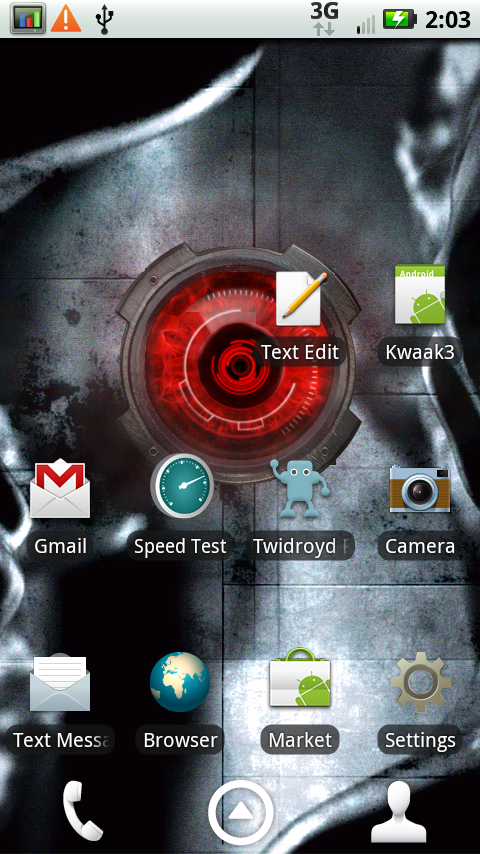 |
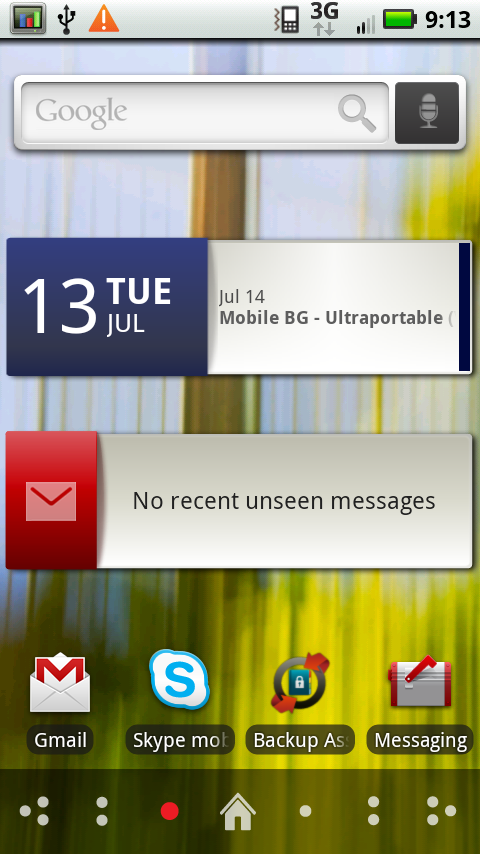 |
The phone comes out of box with Blur widgets all over the home screens. Literally every single one has Motorola widgets and shortcuts, a number of which I immediately dragged to the trash.
Motorola tries to roll all of your social network messaging into a unified messaging application (whose icon consistently confuses me with Gmail’s shorcut icon). It’s a good idea that ended up pushing me over the Twitter API call limit a bunch of times on other devices, but does pull down Facebook messages and others effectively.
|
Social Networking Unified Inbox - Great in theory, not perfect in practice
|
||
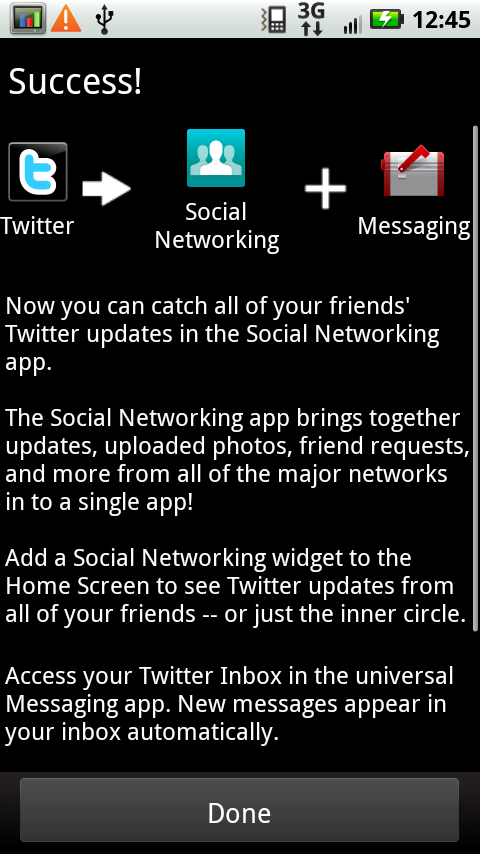 |
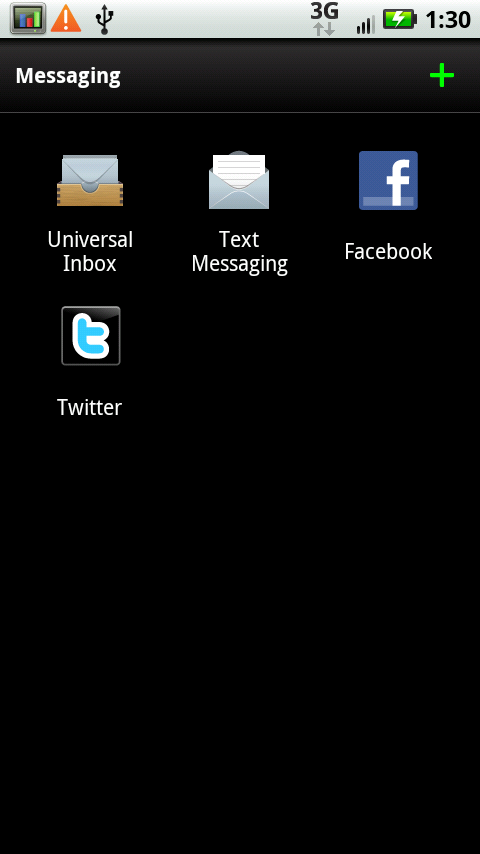 |
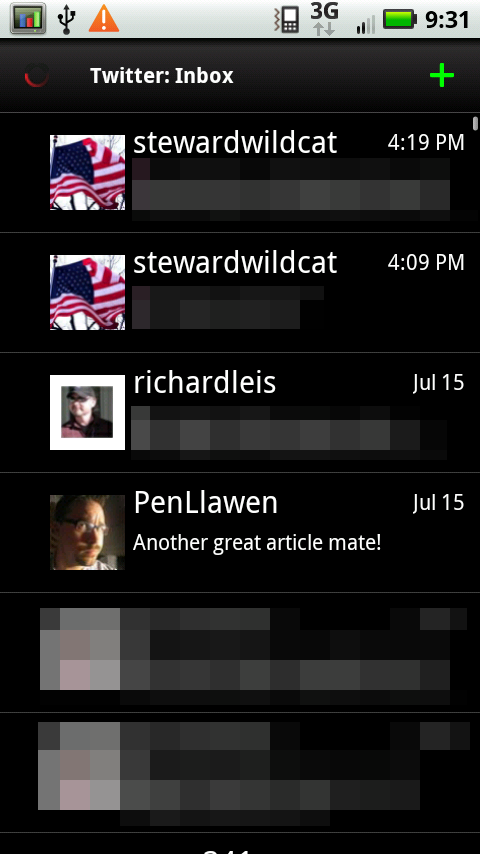 |
I’m just left wondering what use having this done is when Facebook and Twitter offer their own applications and integration - you can inadvertently wind up with two duplicate Facebook icons and inboxes in the messaging app.
But a lot of it I think is quite tasteful. The clock, calendar, and weather widgets are well done, arguably a bit better than Android’s default. The contacts shortcuts are also not bad. They still aren’t as nice as some of HTC Sense’s, but not nearly as bad as I expected them to be. Motorola keeps its widgets in a different tab when you long press on the home screen, so they’re not mixed into your main widgets library. If you don’t like ‘em, they’re segmented away in a separate menu entirely.
|
Blur Widgets - Not bad
|
||
 |
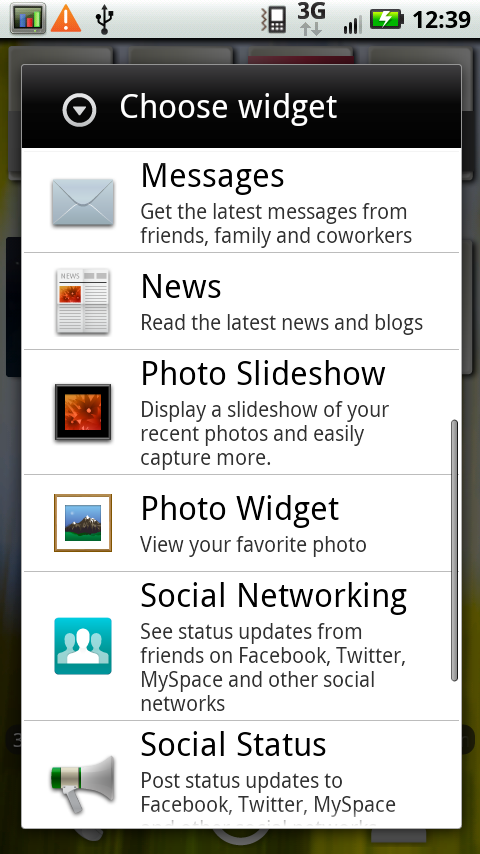 |
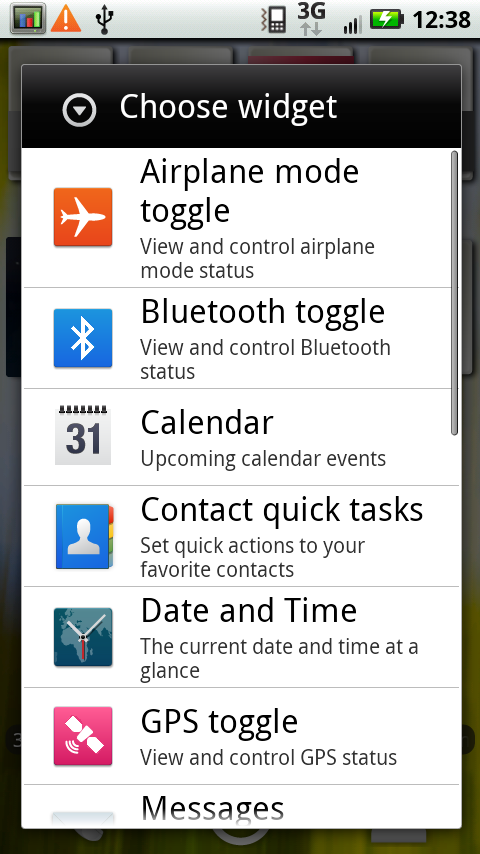 |
The other interesting thing is the way most of the BLUR widgets are resizable. Long press on the widget, and up pop some resize handles at the corners. They’re a tiny hard to get the hang of at first, but you can then drag and resize the widget entirely. I think that’s kind of cool - for example, you can resize the date/calendar widget and see a ton of events instead of just one. Pull down the contacts widget, and you get more shortcuts. Make the weather widget longer, and you get more detail.
|
Blur widgets can be resized dynamically
|
||
 |
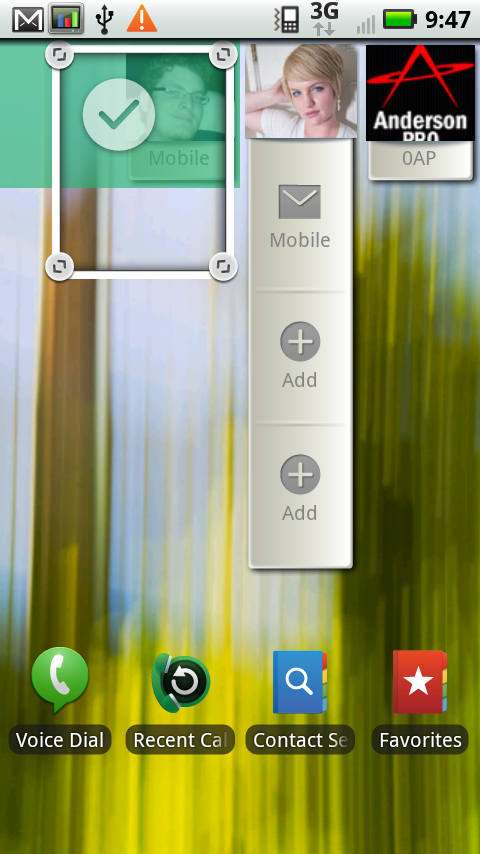 |
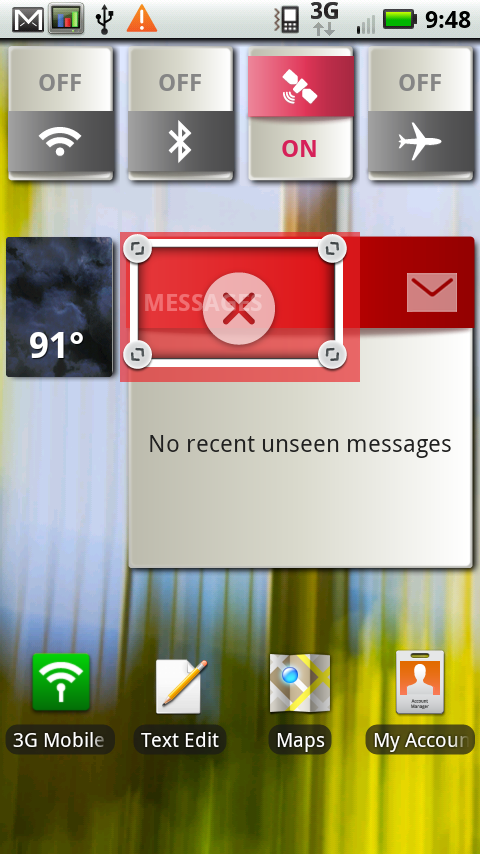 |
The rest of the sense tweaks seem to make the interface actually less busy than stock Android. The signal icons are simple, the shade has no texture when you pull it out, and the applications launcher is just a bunch of application tiles. There’s no 3D cube effect like the Nexus One (which still feels laggy to me), nor a pop up shade like the old Droid, or a button and tray like Sense.
I feel like most of the Blur additions are pretty minimalist, thankfully.
The only major annoyance is what happens to the three icons at the bottom when you change screens left or right. Normally, you see three icons - phone, the applications launcher, and contacts. If you drag back and forth to change which home screen you’re on, however, this changes to a home logo and dots corresponding to the 7 home screens.
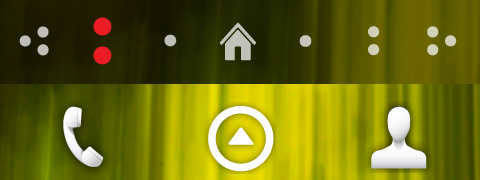
It changes from the bottom to the top when you're touching the screen.
The problem is that this visualization to let you know what screen you’re on (which itself seems a bit extraneous unless you’re spatially challenged) gets in the way of tapping on the applications launcher - it will replace the 3 icons for a full 3 seconds. I inevitably end up sliding to a different home screen, wanting to launch the app launcher, and tapping on home. It’s frustrating. I guess the icons are useful if you want to tap on a specific page, but seriously, it gets in the way.










89 Comments
View All Comments
TareX - Thursday, July 22, 2010 - link
Why are all the Samsung Galaxy S phones missing from your charts and comparisons? I wanted to see how Hummingbird compared and how the Super AMOLED fared against their Droid X counterparts...strikeback03 - Tuesday, July 27, 2010 - link
Maybe because the first US version launched a day before the review went up, and they weren't sent a review sample.enealDC - Thursday, July 22, 2010 - link
Great job!Juniper Research - Friday, July 23, 2010 - link
Very interesting article... we have this week published a new report on smartphones and a free whitepaper is available to download here... http://www.juniperresearch.com/reports/next_genera...John Levett
Marketing Executive at Juniper Research
Homefries - Saturday, July 24, 2010 - link
First off, great review Brian.However, while you did a very thorough comparison of the Droid X to other Android devices, you barely mentioned the real competitor the Droid X has to stand up against: the iPhone 4.
Readers want to know if the Droid X is the best phone on the market - the whole market - not just the market subset dedicated to Android devices.
Like the majority of the tech media, your review furthers the notion readers belong exclusively to either the iOS camp or the Andriod camp. This is simply not true. Informed readers, like the ones that peruse Anandtech, want to buy one smartphone, regardless of any marketing slants, that is the best.
Your review of the Droid X should have helped us answer the question, "Should I buy the Droid X or the iPhone 4?" But, it did not.
strikeback03 - Tuesday, July 27, 2010 - link
Well, I think the conclusion in the iPhone article and some earlier Android articles applies, there is no "best" for everyone. Some people love Apple and the Apple way of life, some people won't touch it. As the iPhone is currently limited to AT&T, that is going to deter a lot of people. How large a pocket/bag you plan on carrying the phone in might make size differences more important to some than others. So while I am not one of the readers calling for no subjective opinions (it is interesting that FroYo feels significantly faster/different) I think it is still up to each buyer to decide what is most important to them.Electrofreak - Saturday, July 24, 2010 - link
Brian and Anand, are you sure you're using the correct information regarding the SoC in the Droid X? I believe it is a OMAP 3640, not a 3630, as the maximum recommended clock speed of the 3630 is described in numerous places across the net as being 720 MHz, while the max clock speed of the 3640 is described as 1 GHz. In addition, the max recommended clock speed of the 3430 in the Droid was 600 MHz, not 800.The information I cite above is widely available across the web... if you've got inside information the rest of us don't have, by all means let us know. But as someone who has written articles of my own on ARM SoCs and follows ARM industry news closely, I suspect that your data may not be 100% correct.
Regardless, I do have to thank you for writing some of the most informative hardware articles on the net. I appreciate it!
Electrofreak - Saturday, July 24, 2010 - link
...and I just found this: http://e2e.ti.com/blogs_/b/mobile_momentum/archive...So, per TI's blog it is the 3630... now we just need an explanation of the other info on the web that describes the 3630 as maxing out at 720 MHz.
Brian Klug - Monday, July 26, 2010 - link
Yeah, TI's documentation is a bit outdated. Anand tackled the SoC part, but the 3630 is indeed a 1 GHz part, it isn't the 3640 guaranteed. There was a lot of confusion online about it, but Anand got the official word. ;)I agree, back when I did my other OMAP 3 piece it was 720 MHz.
-Brian
Electrofreak - Saturday, July 24, 2010 - link
Looking forward to that Hummingbird review Brian. I hope you're able to dig up some info that I wasn't able to when I wrote my article (http://alienbabeltech.com/main/?p=17125) back in April.